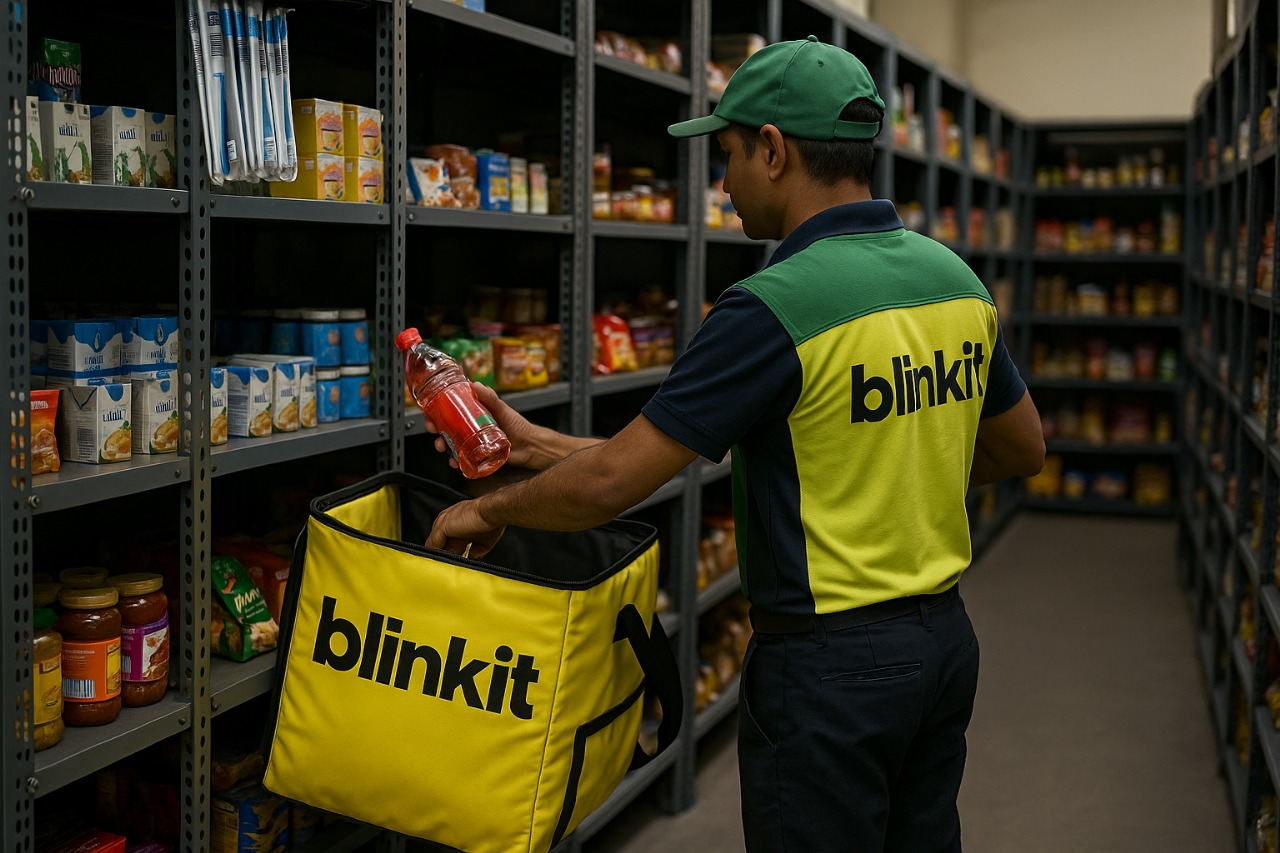Vyapar Acquire Suvit to Boost MSME Digital Compliance




Blinkit, the quick commerce platform owned by Eternal Limited (formerly Zomato), has announced that it will shift to an inventory-led model starting September 1, 2025. This means Blinkit will start buying and storing products directly, instead of listing goods from local sellers like it used to.
This move changes how sellers interact with Blinkit, the way GST registration works, and how customers receive products. It also required Eternal to restructure its ownership to comply with India’s FDI (Foreign Direct Investment) laws.
From September 1, Blinkit will follow an inventory-led model. Under the new model, Blinkit will purchase goods from brands and sellers, store them in its own dark stores and warehouses, and sell them directly to customers. Blinkit will also issue invoices under its own GSTIN, becoming the legal supplier of goods.
The inventory-led model grants Blinkit end-to-end control over stock, delivery timelines, pricing, and even packaging—a far cry from its current role as an intermediary between third-party sellers and customers.
|
“There’s definitely a chance that the number of inventory days on books will go up... but there’s still a very healthy return on capital,” — Albinder Singh Dhindsa, CEO, Blinkit |
Blinkit currently operates as a marketplace, similar to Amazon or Flipkart. In this setup:
But the marketplace model limited Blinkit’s ability to control inventory quality, delivery timelines, and pricing consistency. It also introduced heavy regulatory burdens on sellers, especially under India’s Goods and Services Tax (GST) regime.
Owning inventory enables Blinkit to streamline operations and reduce delivery time, a core differentiator in India’s hyper-competitive quick commerce space.
Without third-party sellers taking a cut, Blinkit can negotiate directly with brands, improve gross margins, and experiment with private labels.
According to Eternal’s CFO Akshant Goyal, even if Blinkit owned 100% of its inventory in FY25, working capital required was under ₹1,000 crore, representing just 3–5% of its ₹22,000–28,000 crore gross order value. Source: Economic times
|
“Even when sellers hold inventory, we end up accepting lower commissions to offset their risk… owning inventory improves return on capital.” |
Certain categories, such as electronics, toys, and home décor don’t align well with the marketplace model. The inventory-led approach allows Blinkit to serve these high-margin, low-turnover segments more efficiently.
In its April 18, 2025 SEBI filing under Regulation 30, Eternal Limited disclosed that by capping foreign ownership at 49.5%, it had qualified as an Indian‑Owned & Controlled Company enabling Blinkit to legally own inventory and expand into private-label categories.
Under existing FDI policy, only an IOCC can directly hold inventory for e-commerce platforms. By securing the IOCC status, Eternal legally cleared the way for Blinkit’s shift to an inventory-led business model, which was announced via seller communications and investor presentations.
|
“We are seeking shareholder approval to become an IOCC... so Blinkit can legally hold inventory.” |
This was a key requirement to comply with India’s FDI laws, which restrict foreign-owned e-commerce platforms from directly owning inventory. The IOCC status, now secured, legally allows Blinkit to stock and sell goods on its own behalf.
According to a Moneycontrol report, Blinkit sent formal communication to sellers on July 12, asking them to opt into the new model by July 30. From August 31, Blinkit will take over the inventory under its own legal entity, Blink Commerce Private Limited (BCPL).
For Blinkit’s 3P (third-party) sellers, the biggest relief will be in tax compliance.
While the model shift impacts backend operations, customers stand to gain too:
While the move simplifies tax compliance, it could affect Blinkit’s kirana partners and last-mile gig workers. As Blinkit phases out third-party sellers and integrates inventory internally, some sellers may see a dip in order volume or be removed from the platform altogether.
This is more than a business model change, Blinkit's shift is a case study in regulatory adaptation. Eternal Limited’s transition to IOCC status, restructuring of ownership, and the pivot to inventory control show how quick commerce players are aligning with India’s evolving FDI and GST frameworks to stay agile and compliant.
Share Article:
While Blinkit's new inventory-led model simplifies compliance for many sellers, it also raises questions especially for those transitioning from direct-to-consumer models to B2B supply chains.
With GST registration norms, invoicing rules, and TCS responsibilities changing, understanding your obligations has never been more critical.
That’s where Startup Movers steps in.
As a trusted financial consultancy, Startup Movers helps e-commerce sellers, D2C brands, and aggregators adapt to evolving GST structures. From centralised registration support to GST filing, reconciliation, and litigation readiness, their team ensures businesses remain fully compliant, regardless of model changes like this one.
Startup Movers helps sellers and suppliers simplify their GST compliance, from registration restructuring to invoicing, reconciliation, audit readiness.
Talk to GST Expert nowFrequently Asked Questions (FAQs)
Why is Blinkit moving to an inventory-led model?
Blinkit aims to optimise delivery time and cost by controlling inventory directly rather than relying on third-party sellers.
How will this impact Blinkit customers and delivery partners?
It may lead to faster deliveries, but might affect product variety and gig partner income.
What’s the difference between inventory-led and marketplace model?
In inventory-led, the platform owns stock. In the marketplace, it just connects buyers to sellers.
Is this model sustainable in Tier-2 and Tier-3 cities?
Currently, the shift is focused on Tier-1 metros where density supports the economics. Expansion strategy is yet to be revealed.

